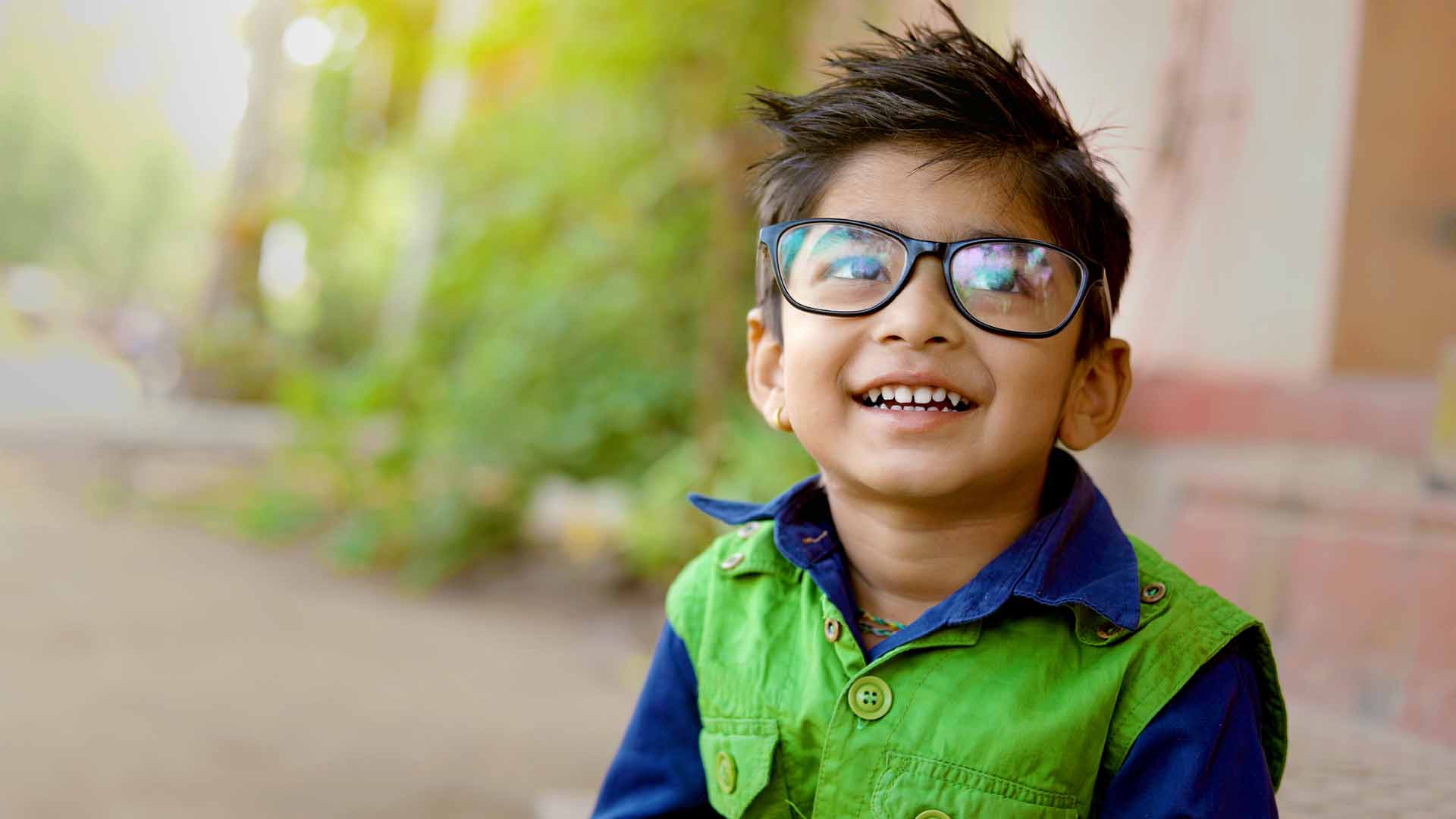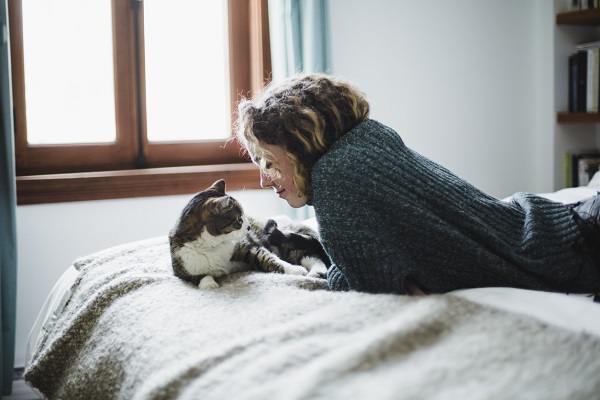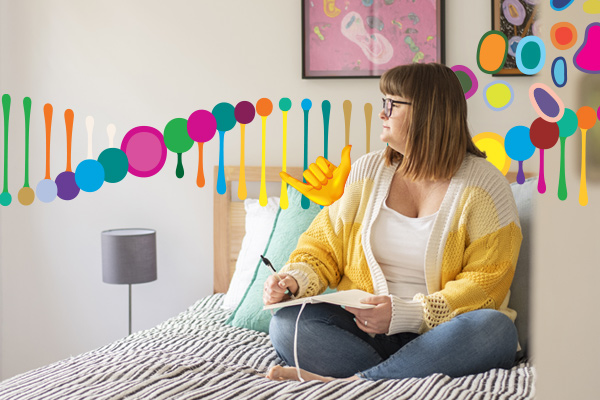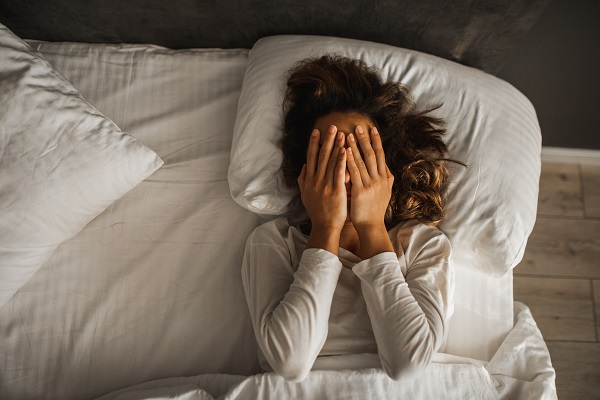-
0 to 18 years
A newborn’s eyes are not fully grown. As the eye grows throughout childhood, it may change shape slightly (becoming less perfectly round). If this happens, light entering the eye may now be focused somewhere other than the retina at the back of the eye, resulting in blurred or distorted vision.
This is known as a refractive error and includes short-sightedness (objects in the distance are hard to see), longsightedness (objects closer to the eyes are blurred) and astigmatism (blurry vision at all distances).
Signs of this can include children finding it difficult to read, and they may squint and rub their eyes. Refractive errors are usually diagnosed during childhood and can be corrected with prescription glasses (or sometimes contact lenses when the child gets older).
20s and 30s
During this life stage, people tend to have healthy eyes and good vision.
By early adulthood (late teens to early 20s), most people’s vision has stabilised because their eyes have finished growing. When this happens, laser eye surgery can be used to correct a refractive error by reshaping the front surface of the eye (the cornea) to make the light rays focus on the retina again.
40s and 50s
At this age the risk of developing eye issues increases.
Presbyopia
Around now, the lens and surrounding muscle fibres start to become stiffer and less flexible, making it harder to focus on close objects. This is known as age-related long-sightedness (presbyopia) and it’s a normal part of getting older. Reading glasses can usually help.
Floaters
People may also start to see floaters in their vision from around the age of 40. This is due to changes in the vitreous – the jelly-like fluid that sits between the lens at the front of the eye and the retina at the back of the eye. As we age, the vitreous becomes more liquid and the collagen fibres in the fluid start to clump together. These clumps cause shadows to be cast onto the retina, which can look like tiny spots, threads or cobwebs floating in your vision.
While floaters themselves are harmless, they can sometimes be a sign of more serious retinal conditions and should always be checked out by a specialist.
Glaucoma
People over 40 are also at increased risk of developing glaucoma, and the risk continues to rise as you age. Glaucoma is caused by damage to the optic nerve, which relays electrical signals from the retina to the brain for processing into the image that we ‘see’. In most cases, the nerve damage results from increased pressure inside the eye.
Many people don’t have obvious symptoms until the disease is very advanced – there is no pain and vision seems normal. Fortunately, the condition can be detected during routine eye checks, and treatments are available.
Dry eye
Dry eye also becomes more common with age. Women are more likely to suffer dry eye because of the hormonal changes associated with menopause. Though dry eye cannot be cured, there are treatments available to relieve symptoms, including some simple home treatments like artificial tears and warm compresses.
60+
Eye checks are needed more frequently during this period to ensure that any problems are detected quickly.
Cataracts
With age, the proteins in the lens clump together, making it cloudy. This is known as a cataract, and it obstructs the light rays trying to enter the eye. The process is gradual, so vision gets worse over time and can eventually lead to blindness. Symptoms include blurred vision, colours appearing faded and trouble seeing in lowlight conditions.
Cataracts can be surgically removed and replaced with an artificial lens to restore vision.
Age-related macular degeneration
Another part of the eye that changes with age is the retina – the lightsensitive tissue at the back of the eye.
As the retina ages, vision becomes less sharp and it’s more difficult to distinguish between similar colours and to see in low light.
At the centre of the retina is the macula, which is responsible for fine-detail, central vision (i.e. the vision you use when reading or driving). Age-related macular degeneration (or AMD) affects this central vision, and can eventually lead to vision loss and blindness. Symptoms to be aware of include straight lines appearing wavy and loss of central vision.
You’ve only got one set of eyes
Many conditions related to ageing are largely preventable or treatable, highlighting the importance of regular eye checks – even if you think everything’s okay.
How often you get checked depends on your age, your general health and whether you’ve had eye problems in the past. As a general rule though, you should have your eyes checked every 2 years or so – people over 60 should see their optometrist yearly.
Of course, any changes to your vision or problems with your eyes should be investigated immediately. Your optometrist will refer you to an ophthalmologist if necessary.
Learn more about your eyes at Vision Eye Institute.
How do our eyes change at each life stage?

-
Eat for your eyes
Some of our favourite foods to help keep your eyes healthy.
-
How is ‘phubbing’ hurting your relationships?
Here’s how to stop phubbing and be more mindful of your phone habits, to help improve face to face interactions with your family and friends.
-
Are the winter blues real?
Simple ways to boost your mood in winter.
-
Mental fitness explained
Just as you work to strengthen your body, your mental health deserves attention and exercise too.
-
The link between stress, anxiety and jaw pain
Physiotherapist Michael Chan explains how stress and anxiety can cause jaw pain, and how to help get some relief.
-
When you can't sleep next to your partner
You love everything about them – except their sleep habits.
Subscribe to receive the best from Live Better every week. Healthy recipes, exercise tips and activities, offers and promotions – everything to help you eat, move and feel better.
By clicking sign up I understand and agree to Medibank's privacy policy





.jpg)
